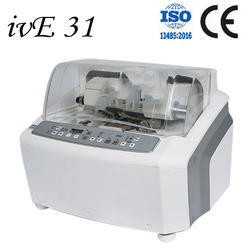Methods for testing the quality of ready mix concrete
On-field testing of ready-blend concrete can be during installation or a disquisition of installed concrete to determine its strength rates.
Concrete Depression tests
Depression testing your concrete can help you estimate the inflow characteristics of lately mixed concrete. However, you need to place concrete into an inverted cone and use an essence rod to tamp down the concrete after each stage duly, If you wish to do a depression test- click here .
After the cone is full, you need to lift it off the working face by using angles on each side of the cone, which causes the concrete to subside or slump on the ground due to graveness. The total difference between its original height and drooped height is also measured; this is recorded as depression.

A depression ranging from 4 to 5 elevation should be considered a perfect balance between thickness and plasticity. Anything lower than this range can be hard to work with, while anything lesser can insulate during placement.
Air content testing
Air is detrained inside concrete to give help in expansion and compression capabilities, particularly in places that witness a lot of swings in temperature. Air content testing of concrete can be conducted to determine if the delivered concrete has the needed air content specifications established by a mastermind.
To conduct an air content test, a field technician will fill an indirect essence base that has three lifts of concrete, which are stamped by using an essence rod which is analogous to the fashion used for depression testing.
Once your base is full, an essence lid that has a pressure guard attached to its face is placed on top, and all corridors are locked together. A hand pump is also used to pressurize your device to a particular estimation point, and it’s also allowed to stabilize for a while.
After the stabilization process is completed, all the pressure is released, and the technician can read the concrete air content from the dial attached to the device.
Unit weight
Measuring the unit weight of concrete is a fairly easy task. Fresh concrete is placed inside an open vessel of a given weight and volume to give the unit weight or viscosity of your concrete. It’s generally reported in pounds per boxy bottom.
On-field testing of being concrete
Retrofits of being structures and forensic examinations may occasionally bear knowledge of a being concrete structure’s total strength. There are two main ways you can establish the strength of your concrete. They’re destructive and non-destructive.
Schmidt rebound hammer
The main way of non-destructive testing your concrete is by using a Schmidt rebound hammer. This hammer works by firing a spring-loaded mass onto your concrete and measuring the total quantum of an answer off the face.
This value can also be compared with a conversion map to give you a rough estimate of your concrete structure’s overall compressive strength. generally, you’ll have to calibrate your hammer before use and may have to test several points to establish an average value.
Destructive concrete testing
To gain an indeed more accurate value of concrete compressive strength, you can choose to go for a destructive testing system.
You’ll have to get a concrete cylinder removed from a living structure and get it delivered to a laboratory for further testing If you decide to go for this system. They will use the same system for cylinders from lately poured concrete. Given below are many comprehensive laboratory tests.
Comprehensive strength laboratory test
To determine if the concrete delivered and placed in a construction point meets its required strength needs as established by a mastermind. Laboratory tests are conducted on unrepresentative cylinders of concrete from the design point.



